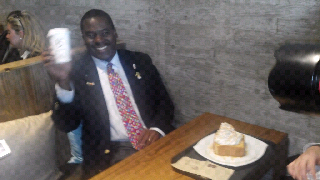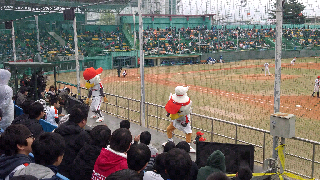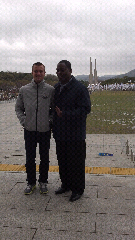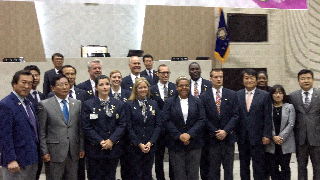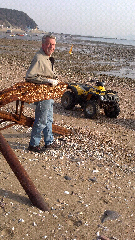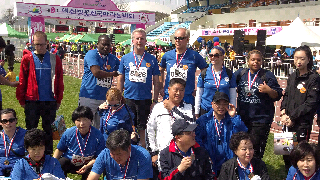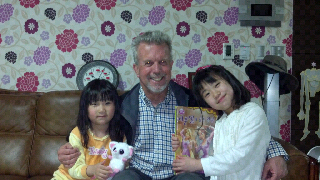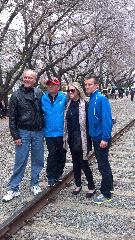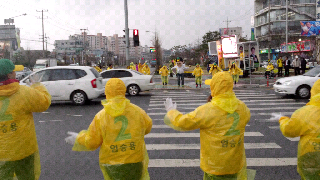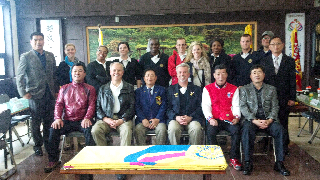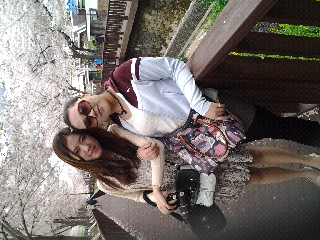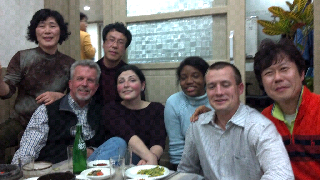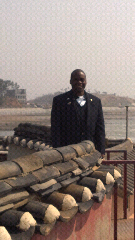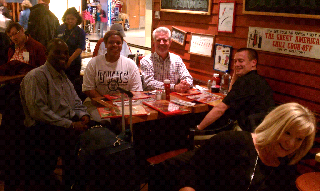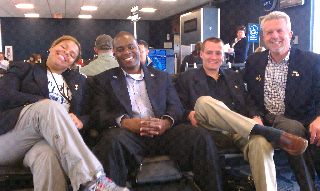Some observations/thoughts half way through our GSE adventure:
* We have been treated like royalty throughout ur stay. In every town, locals have gone WAY out of their way to make sure we are comfortable and want for nothing.
* Each of our host groups of Rotary clubs has been unique. Our first group of hosts in Saeson City were so warm, happy, laid back, relaxed...it will be a tough comparison for this next group. The first Asst District Governor was a wild man, always talking on the phone while driving, laughing, quite the life of the party. Our second group of clubs in Boryeong was much more formal than the first. Still friendly, but with more formal presentations, etc. Third group in Hongseon had the best English skills, were very clear with timetables and directions, yet were very affable. The Yesan group is a lot of fun and perhaps a little disorganized. Seems as though every trip or activity requires a committee meeting among the Rotarians. It will be fascinating to see what our remaining three host groups will be like.
* We have received wonderful, often lavish gifts at every stop. From large gift boxes of Kim (the dried seaweed) to statues/trophies commemorating our visit to original artwork by local artists - every stop has included gifts of some sort. I filled two large pieces of luggage with things we will give to local host families, thinking we could bring back our team's gifts in those bags. Not even close...I've filled one of the bags already with gifts only to me, and we're only halfway through!
* The Yesan Rotarians have offered what may be the most amazing gift of all. Tonight they will give us boxes we'll fill with our gifts to date, then they'll ship them home for us...at their expense. Wow.
* Not surprisingly, our delegation may be perceived the way Americans often perceive Japanese/Asian tourists, all with cameras ready to take pictures of eveything. Every meeting, meal or other event ends with a 12-camera photo op..."say kimchi!"
* One of the cultural differences we've encountered has caused a little discomfort among team members. In Korea, friends of the same gender who travel typically sleep inthe same bed (now I better understand why my 20-year-old son Chris would often sleep in the same bed with his first-generation Korean friend Tae). Not so for Americans. Our team members have often been paired up for homestays, finding one bed for them to sleep in. They've made the best of it, and we've let our Korean GSE Chair understand the difference.
* The portion of Korea we've been visiting is clearly off the beaten tourist track. Except for our visit to the southeastern coast, I could count on one hand the number of non-asians we've seen. That's been very cool.
* Though we're clearly a curiosity to many locals, people have been universally friendly. After a Korean greeting, school kids will say "hello" and "how are you" before bursting into fits of giggles. We get a few high fives along the way.
* So many of the products we've seen here are American in style/branding. I figured I'd look for a baseball cap with Korean lettering on it or some sort of Korean branding...no such luck, but I can easily get a Yankees cap or Polo branded shirt.
* Customs are so interesting. Meals may have a main entree (e.g. a soup with meat), but there are always 6-10 dishes with Kimchi, fish, vegetables, meat, etc. Diners pick stuff from any of these dishes any time throughout the dinner. Food is delicious. Some is spicy hot, some is not.
* If anyone had told me a month ago that I would be eating live (truly squirming on the plate) octopus tentacles, I'd have told them they were out of their mind. Yet here I was last Friday evening, chomping away (and you do need to chew very well, lest the octopus latch onto your tongue). With the right sauce, it's quite tasty.
* In a country with such a strong economy, living standards are quite simple. We believe the families we're staying with are well-to-do, yet their homes are generally pretty simple...not a lot of frills.
* Toilets reflect the combination of ancient traditions and modern convenience in Korea. We've experienced toilets that are porcelain holes in the ground and toilets that have heated seats when you sit down and have electronic buttons for every imaginable convenience (bidet, rectum washing, bottom washing and more).
* A number of our hosts have expressed that Korea has gone from being one of the poorest in the world to one of the richest in the last 50 years; they received so much help when they were poor, now they want to help other nations by sharing of their wealth.
Surprises:
* Road signs almost always have English printed right along with Korean.
* Traffic is interesting. There are some traffic signals, but no stop signs whatsoever! People just go where they need to go. It's chaotic, yet we've seen no accidents or dented cars.
* Very few Koreans speak English. From our first host family and interpreter, we learned that all Koreans are taught English througout their school years, but it focuses almost exclusively on book learning to pass tests - reading, some writing, and listening, but very little speaking.
* Several of our preconceived notions about Korea have proven to be false:
* We expected more formality and less warmth than we've seen.
* We expected more internet access. Families seem to have intenet connections, but seldom wireless.




